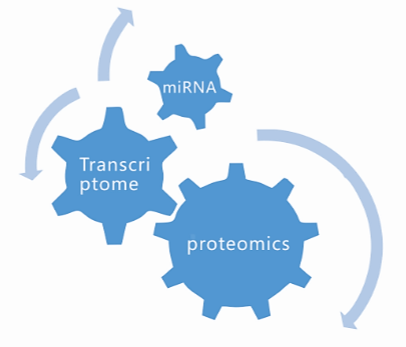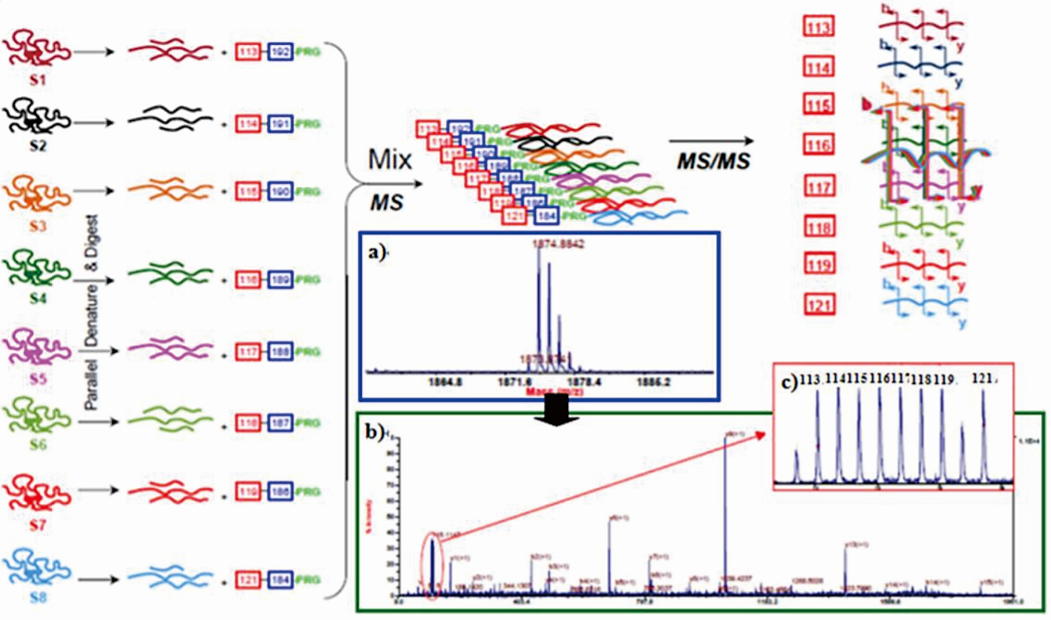技术原理
该技术于2004年在美国质谱年会被首次提出,现已成为一种广泛应用的蛋白质组学定量技术。
iTraq(isobaric tags for relative and absolute quantitation)通过8种同位素的标签,特异性的标记肽段的氨基基团,分别产生113、114、115、116、117、118、119和121的报告离子,在二级质谱中得到不同样品间蛋白质组的相对定量信息。

技术优势
1. 可同时比较8种样品间的蛋白质组差异变化
2. 实验处理简单,周期短
3. 牟合生物已完成中国、法国、德国、美国、南非等大量病理组织、临床病原微生物的定量蛋白质组学分析
4. 基于系统生物学和精准医学的理念,率先提出了转录组学和蛋白质组学的关联分析,进一步提高组学数据的分析价值。

实验流程

参考文献
[1] Michael P. Weekers, Peter Tomasec, Steven P. Gygi and et al. Quantitative Temporal Viromics: An approach to investigate host-pathogen interaction. Cell. 2014, 157, 1460-1472
[2] S Tonack, C Jenkinson, E Costello, et al. iTRAQ reveals candidate pancreatic cancer serum biomarkers: influence of obstructive jaundice on their performance. British journal of cancer. 2013, 108(9):1846-1853
[3] Suvi-Katri Leivonen, Anne Rokka, Merja Perälä and et al. Identification of miR-193b targets in breast cancer cell and systems biological analysis of their functional impact. Mol Cell Proteomics. 2011, 10(7):3060-3075














